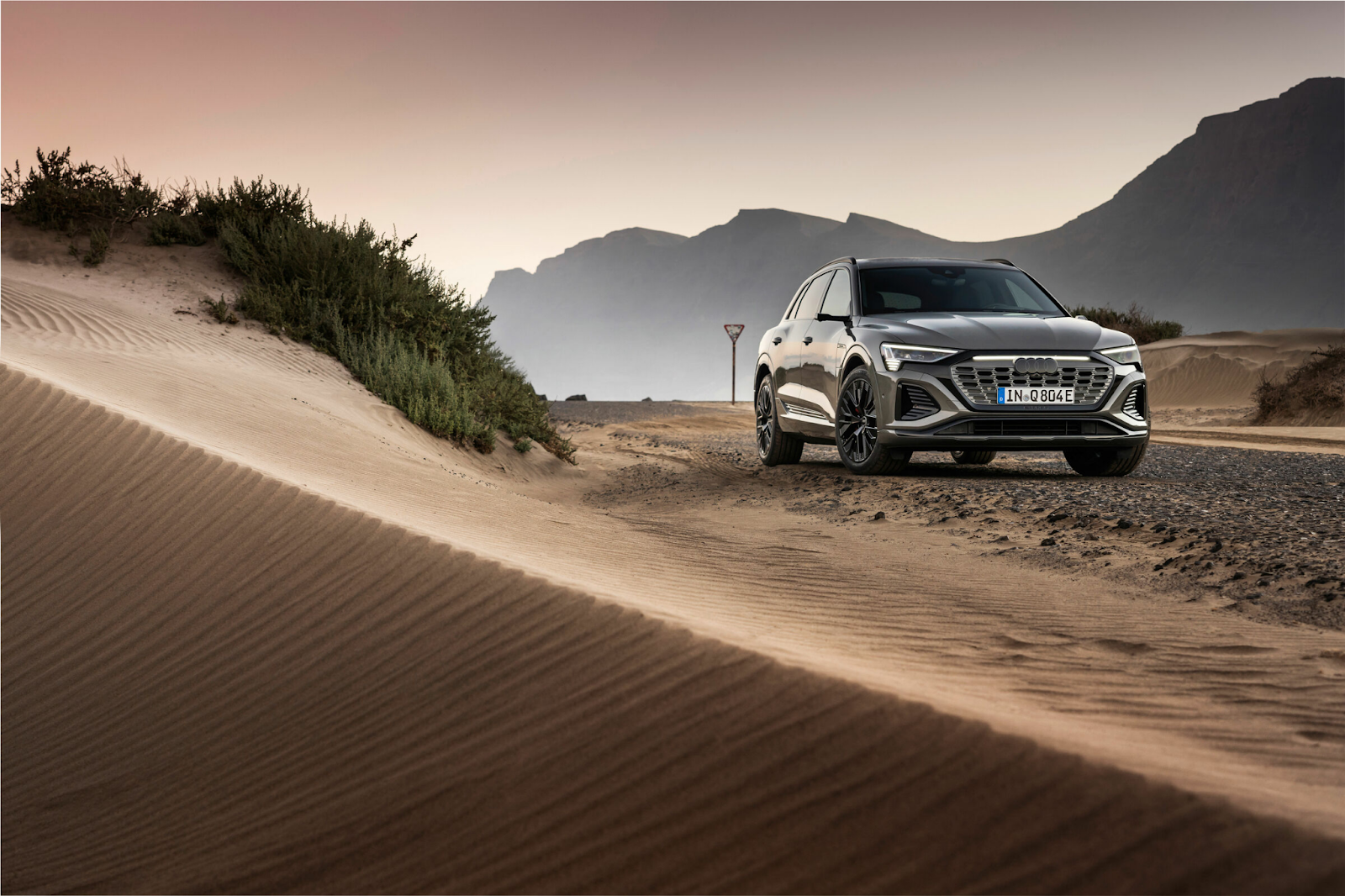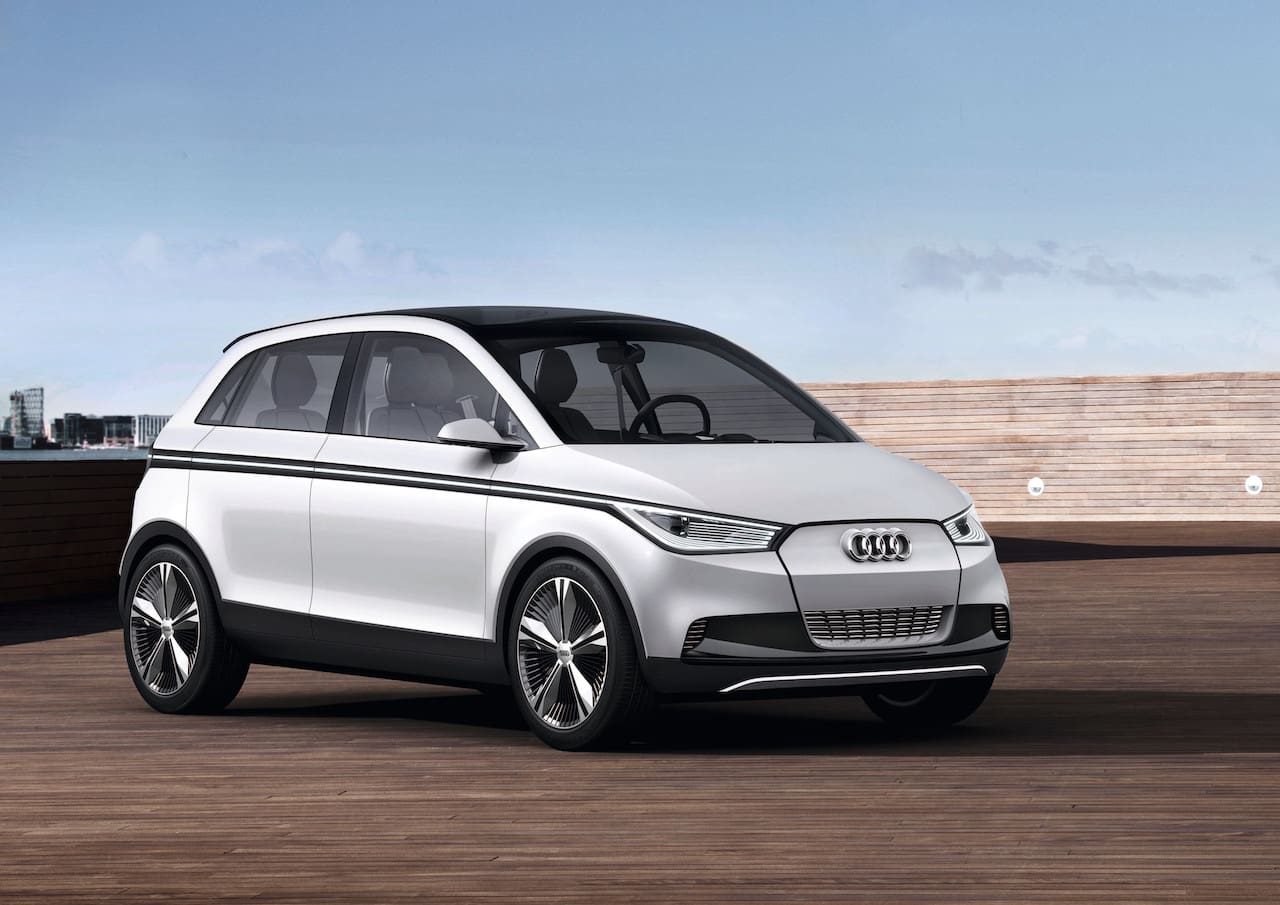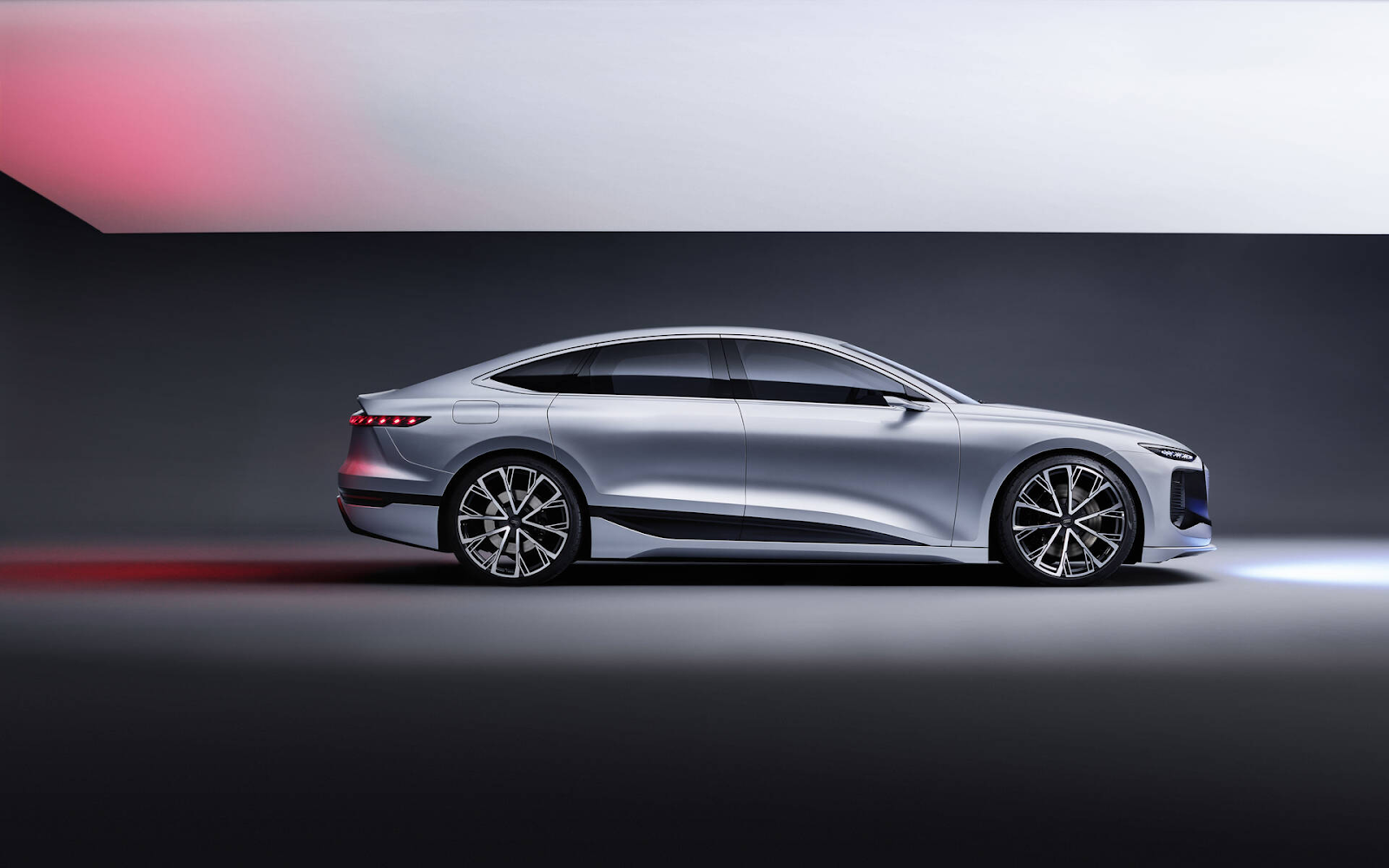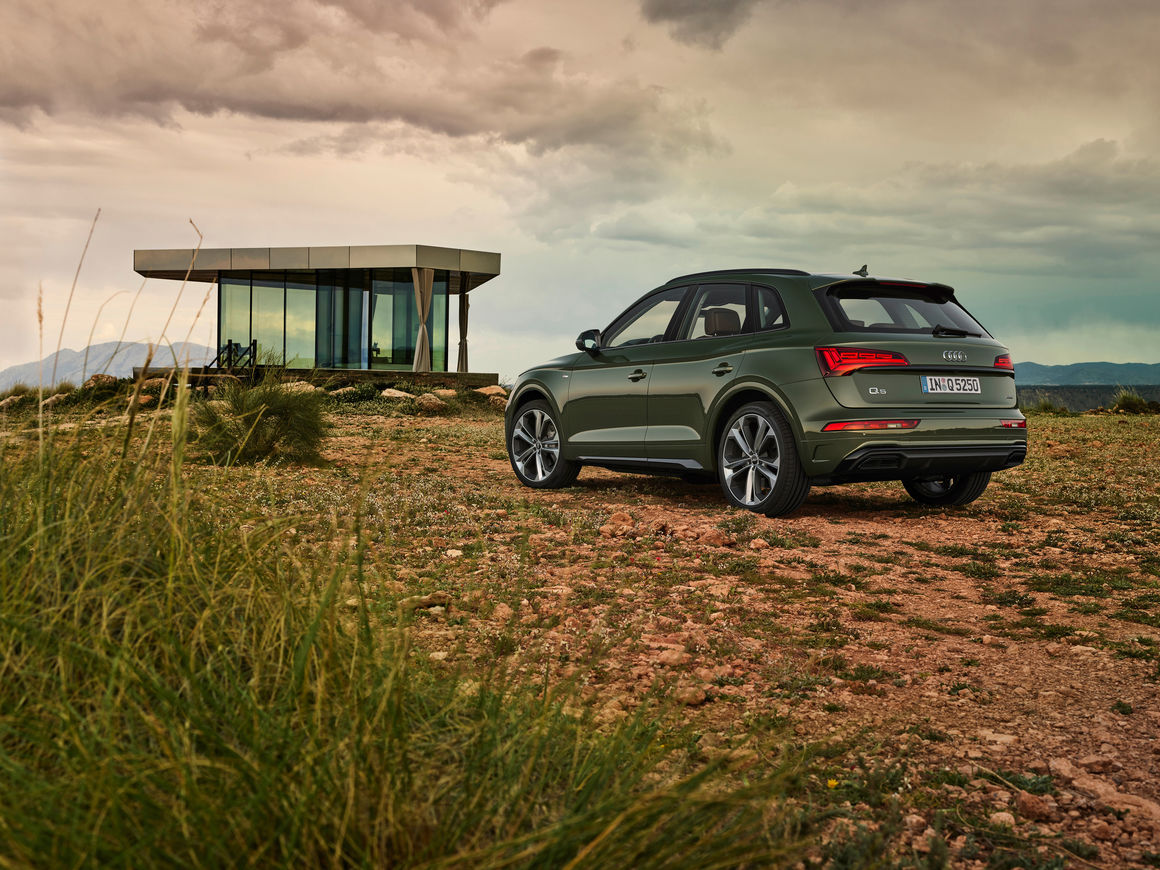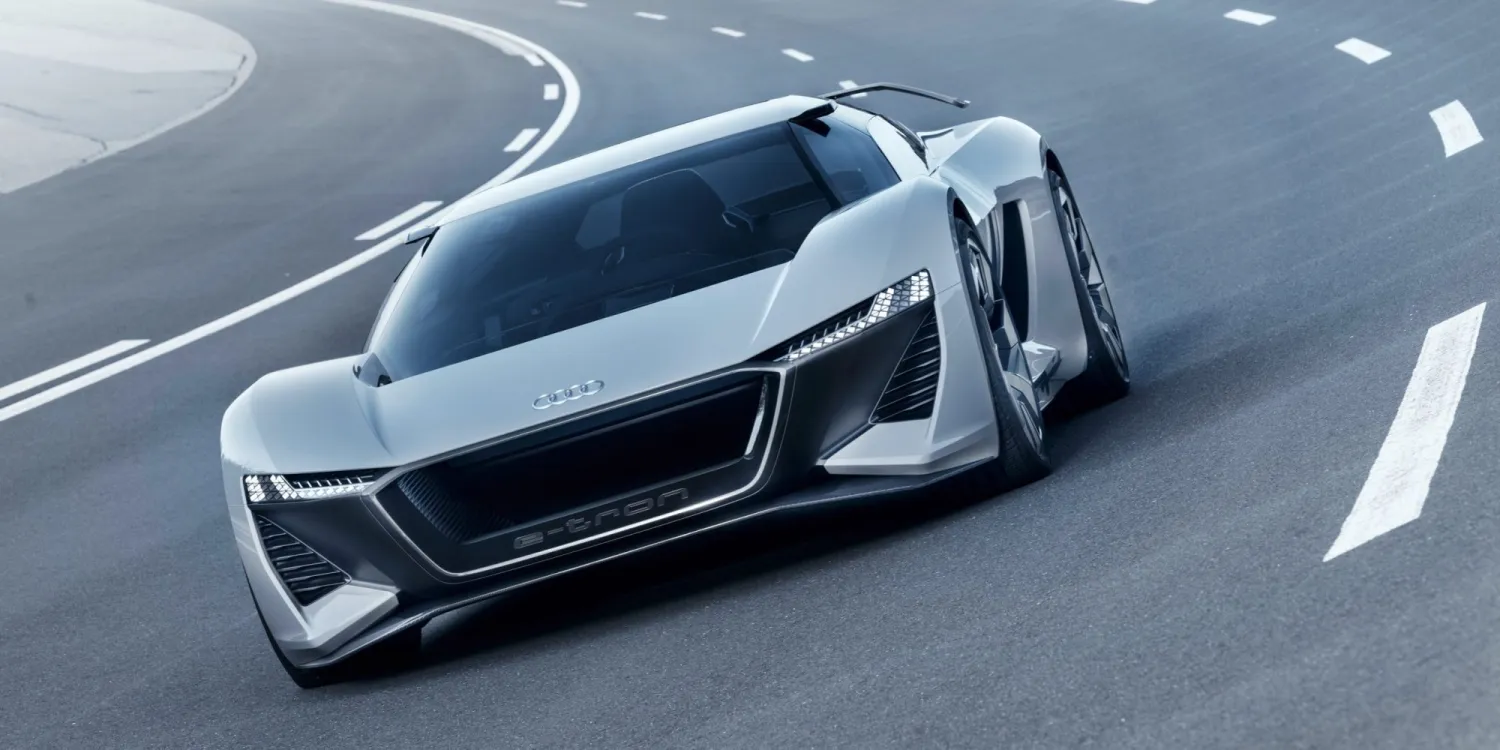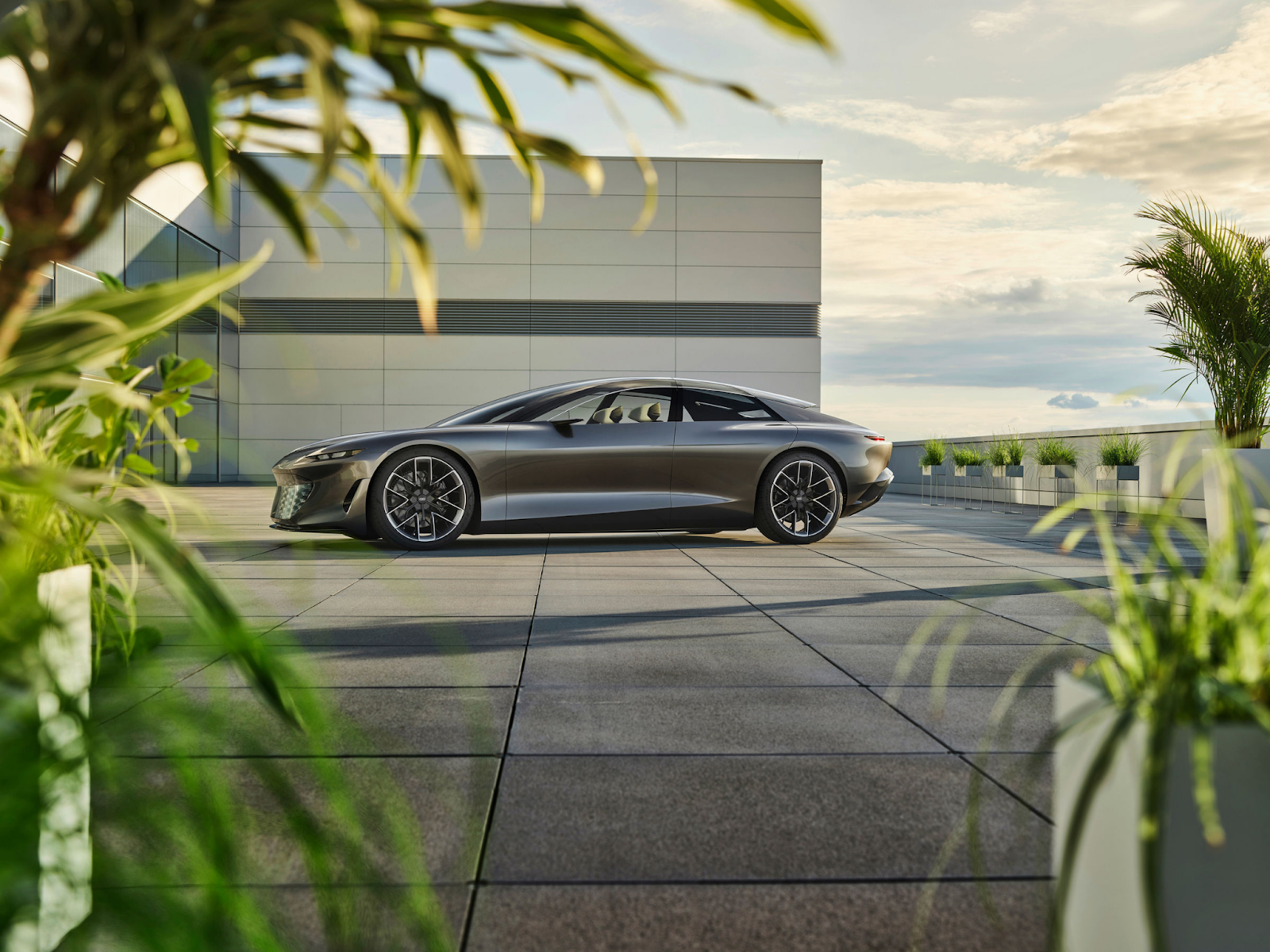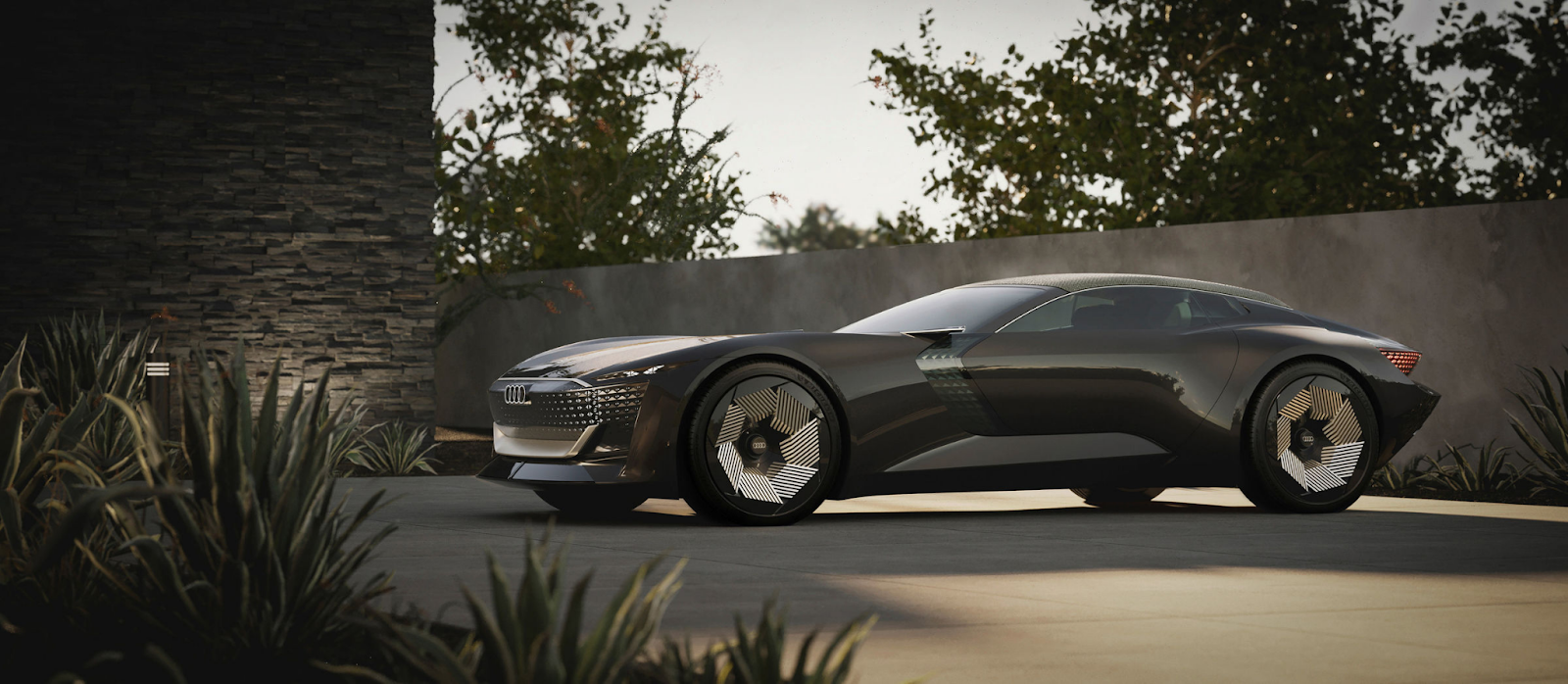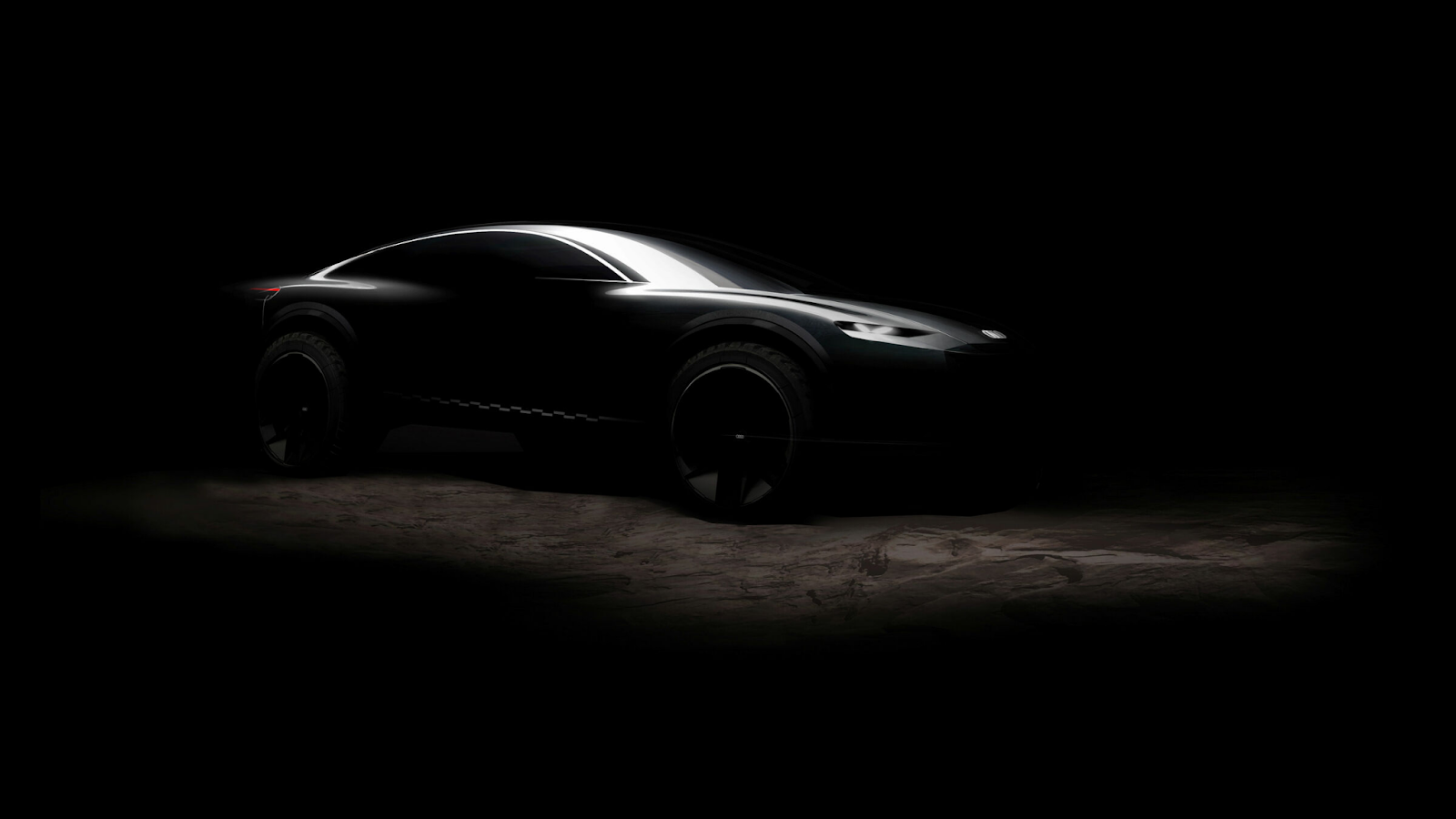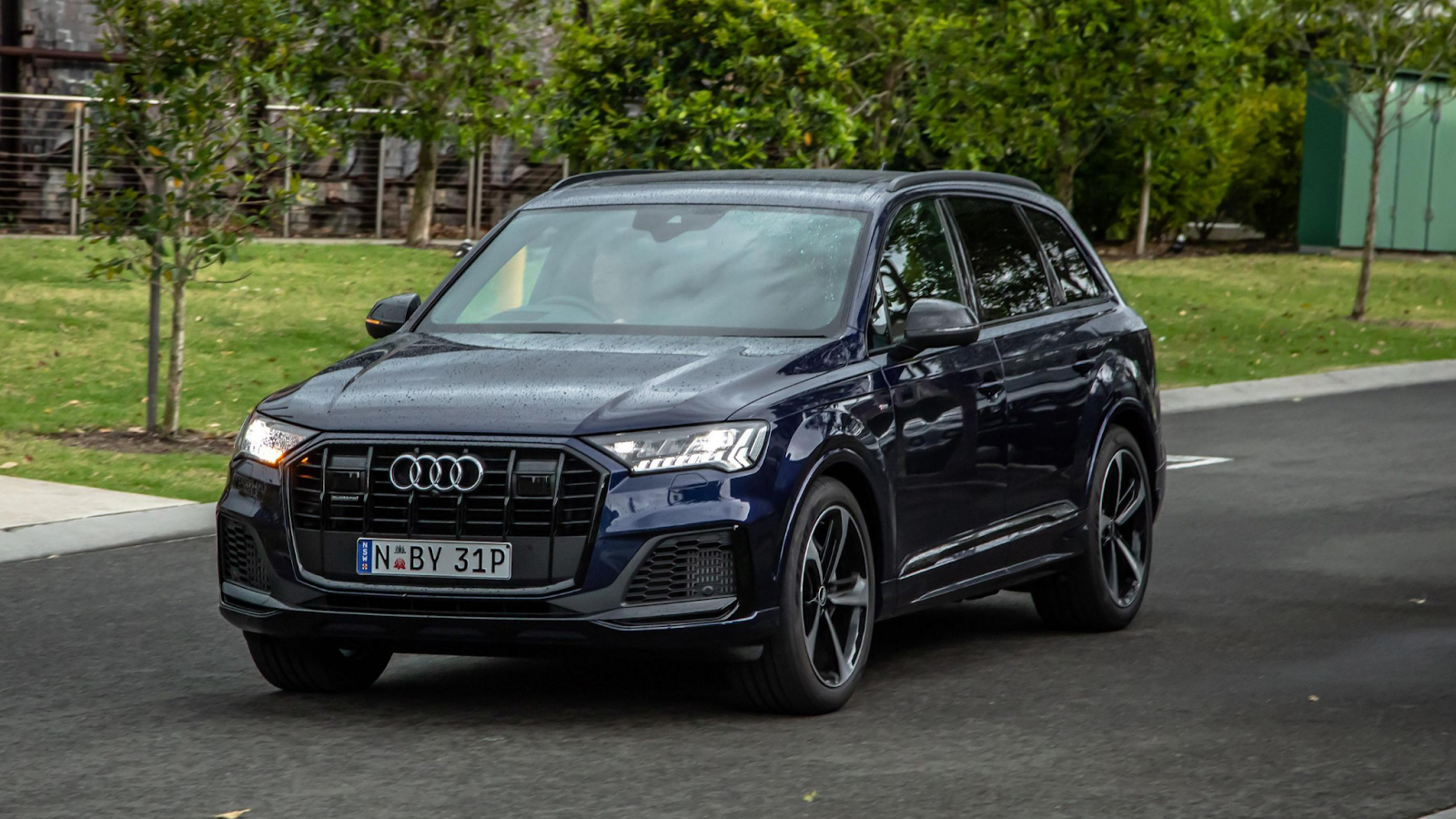Nowadays, Audi is really shifting gears and getting serious about electronic mobility. They decided that from 2026, no more models with combustion engines will come onto the market. So their popular combustion models only have 3 more years of updates left. We wanted to tell you what you can expect in the coming years.
The time for fossil fuels is running out and Audi intends to stop launching combustion models earlier than most other manufacturers. However, Audi fans can relax because, until 2025 there will be more facelifts and new model generations of popular Audi models. We can tell you what to look forward to.
2022
Q8 e-Tron
The name might not make sense to you, because the model was previously known under the name e-Tron. The addition of Q8 is intended to clarify the flagship position of the model again. The facelift of the Q8 e-Tron was presented on November 9th and not only has a new name in its luggage, but also optical innovations.
The Q8 e-Tron is still quite clearly recognizable as the previous e-Tron. Whether it's a Sportback or SQ8, the design changes are clear but not overly pronounced. The front of the vehicle in particular was tackled during the facelift. Among other things, the front and rear are responsible for the fact that the Q8 e-Tron is immediately recognizable as an electric model.
The Q8 e-Tron is the first model to herald the manufacturer's new corporate identity. The four Audi rings are now two-dimensional, and the model lettering with the Audi logo on the B-pillar is new and part of a new identity.
It comes with electric all-wheel drive and three drive variants for all body shapes. The base models Q8 50 e-Tron and Sportback 50 e-Tron have an output of 340 hp in boost mode. In addition, the maximum torque is 664 Nm. The range for the basic variants is 280 miles for the SUV and 290 miles for the Sportback.
Finally, there are the top engines of the SQ8 e-Tron models. These are powered by three electric motors, resulting in a power boost of 503 hp. The torque increases to a whopping 973 Nm. If you drive the SUV, you can travel 284 miles, in the Sportback the maximum range is 295 miles – more power ultimately means less range.
2023
Q6 e-Tron
The Q6 e-Tron is already in the starting blocks, as it has already been spotted on test drives with the front section covered. The electric SUV should have a long range and a very good charging standard. The Q6 e-Tron will possibly celebrate its premiere in the spring of 2023.
The Q6 e-Tron will get a grille similar to other electric models like the Audi Q4 e-Tron, along with some stacked headlights. They will likely come with various graphic options on their pixelated LED interiors, as seen on the Audi RS3 and A6 e-Tron concepts. The large radar sensor in the lower bumper also hints at some high-tech driver assistance features. Depending on the trim level, the new car will also be offered with different colored radiator grilles.
The rear of the new Audi Q5 e-Tron appears to be inspired by the smaller Q4 e-Tron, with the sloping roofline and sleek LED lights. It is likely that these too will be connected by a full-width light bar. The new Audi Q6 e-Tron will be based on an updated version of the Audi e-Tron GT platform, which is also shared with the new Porsche Macan EV. It is also expected to have a 100kWh battery pack.
Engine options are expected to be shared with the A6 e-Tron. These include single and twin-engine variants, potentially with up to 476 hp and 800 Nm of torque. The Q6 e-Tron is said to have an 800-volt electrical system that can charge it from zero to 80% in just 25 minutes.
Q9
Audi gets a new flagship - the Audi Q9. The huge SUV is to come both as a classic combustion engine and with plug-in hybrid technology. A lot of space is also expected. We estimate that the premiere will also take place in spring 2023.
The new Audi Q9 will share components with the Audi Q7, Q8 and Porsche Cayenne - albeit stretched to offer even more interior space. Engines similar to those found in these vehicles will also be found under the Q9's huge bonnet.
The entry-level models will likely come with a 3.0-litre V6 gasoline or diesel engine, while the higher-end models (and future SQ9 or RS-Q9 versions) will come with a 4.0-litre V8 gas engine and could get double turbo. The mild hybrid technology should be used at least once in the entire model series.
A plug-in hybrid version with the same engine as the Porsche Cayenne Hybrid is also likely, but an all-electric variant isn't expected anytime soon. If you're looking for a stylish electric SUV, you'll have to make do with the Audi e-Tron. It will be one of the most expensive Audi SUVs on the market.
A2 e-Tron
It has not yet been confirmed whether the Audi A2 will be launched again – but this time in the form of the A2 e-Tron electric model. Actually, Audi doesn't want to build any more entry-level models in the future, but maybe they'll make an exception here.
A6 e-Tron
Just a few months ago, the Audi A6 Avant e-Tron concept car was unveiled, which takes up many elements of the sedan study presented last year. Neither the concept nor the new prototype looks like today's Audi A6 - whether that's a good thing or not is up to you to decide.
At the front, you can spot some ultra-thin daytime running lights peeking through the prototype's camouflage above some larger high beams - similar to the setup BMW has announced for the forthcoming 7 Series and i7 electric car. The bottom grille looks higher than that of the concept car, but that could be a case of clever camouflage meant to obscure the final design.
One thing that hasn't changed from the concept version of the sedan is the distinctive side profile. It's a long car - perhaps a bit longer than the current Audi A6 - but its sweeping roofline is more akin to that of the sleek Audi A7. The concept versions of the Audi A6 e-Tron use a 100 kWh battery with a range of 430 miles. It can be expected that the finished car will come close to these values.
It can also be fast-charged with up to 270 kW, allowing you to travel 185 miles in just 10 minutes. We assume that the road version of the Audi A6 e-Tron will be available with several engine options. The long-distance versions are expected to use a single motor to drive the rear wheels. In the high-performance versions, a double engine with up to 476 hp and 800 Nm of torque is to be used. These will be equipped with all-wheel drive.
2024
A4 e-Tron
Along with the new Audi A4, there will also be an RS 4, which is said to be a hybrid vehicle. The planned A4 will probably be the last model generation with a combustion engine and could come onto the market in 2023 or 2024.
The new generation of the Audi A4 expected in 2024 will also be comprehensively electrified, according to a report. In addition to mild and plug-in hybrid models, there will later also be purely battery-powered versions as competitors for Tesla's successful electric mid-range model 3.
Combustion engine versions of the next A4 will be based on an adapted version of the existing MLB platform. In addition to the sedan, there should also be the station wagon format Avant again. The MLB models are powered by optimized gas and diesel engines, either with mild or plug-in hybrid technology and with front or all-wheel drive. Thanks to a larger battery than the previous partially electric A4, the plug-in hybrids could travel 45 or more miles in electric mode.
The top model of the RS4 series is also to receive electrical support for more than today's 331 kW (450 hp) of power. According to a report, an A4 e-Tron powered exclusively by electricity is also in development. The technical basis is to be provided by the new Premium Platform Electric ( PPE ), designed jointly by Audi and sister company Porsche.
The mid-size sedan will soon only be available with electricity. In 2024, the A4 e-Tron could already be on the road as a production model. The classic A4 will initially come as a combustion and hybrid version, but an electric version is also planned.
Q5
In 2024 we expect a brand-new Audi Q5. The premiere could take place as early as 2023, but the market launch will probably not be until 2024. In addition to gasoline and diesel engines, we also expect a PHEV unit. It is still unclear whether a coupe version will follow.
The new Audi Q5 is still pretty well camouflaged at the moment, so you can only see some of the classic Audi design details. For example, it looks like this Q5 will continue to get the big Audi grille at the front. You can also spot some lower air intakes and sleek new LED headlights.
Overall proportions don't seem to change all that much as this prototype shares the same boxy shape as the current car. A coupé version of the Audi Q5 Sportback could follow at a later date. At the rear, the circular taillights are probably just test objects to hide the full-width light bar. This one will likely look similar to that of the Audi Q4 e-Tron.
There's no word on what engines will be available for the new Audi Q5, but Audi has said they will continue to make diesel-powered models through 2025, so there could be diesel variants on offer. It is very likely that the new Q5 will also be offered as a plug-in hybrid in addition to the usual petrol engines. A performance SQ5 is also conceivable, but it will probably come later, if at all.
Unnamed R8 successor
The successor to the Audi R8 will most certainly be an all-electric model. The sports car should climb to the top of the e-Tron models at the earliest in 2023, rather later. We still have to wait and see which platform it will be built on and how much horsepower can be expected.
A6 e-Tron Avant
The concept vehicle of the A6 e-Tron Avant has already been presented. We can easily expect a very modern electric station wagon which is located in the upper class and should bring a range suitable for long distances. We do not expect the premiere of the series model until 2023 at the earliest, which will then probably not be in dealerships until 2024.
As far as the lines are concerned, a further development of the manufacturer's current design language can be seen. A closed Singleframe, the continuous light strip at the rear and other elements show the relationship with current electric Audi models.
Hard edges have been avoided, instead, there are smooth transitions and soft shadows over the entire body. As a result, the A6 e-Tron Avant appears almost monolithic, as if it were made from a single piece. The roof arch slopes gently backward and shows a sloping D-pillar - a typical feature of the Avant models. The sill has a black insert, which has meanwhile established itself as an element of the Audi electric models.
Just like the slim exterior mirrors, which are designed as cameras. You can also see flat headlight bezels that jut out far into the sides. Also immediately recognizable is the aerodynamic design, which was not only designed to make sense visually but also functionally. A rear spoiler in a contrasting color additionally emphasizes the silhouette and is also responsible for aerodynamics.
The electric station wagon will not disappoint in terms of charging capacity and range either. With 800-volt charging technology, charging can take place with a charging capacity of up to 270 kW. It was important to Audi that the Avant had a range suitable for everyday use and was therefore also suitable for long journeys and families. Depending on the drive and model variant, the range should be up to 435 miles.
If you need to charge briefly in between, you can do so at the quick charging station and fill up with enough electricity for another 190 miles in just 10 minutes. The total output of the two built-in electric motors is 350 kW, and the maximum torque is 800 Newton meters. The Audi air suspension and adaptive dampers are also installed in the concept.
2025
Grand Sphere - A8 successor
The Audi Grand Sphere, which has already been presented as a concept vehicle, is planned as an electrical replacement for the Audi A8. The luxury sedan could deliver up to 1,150 hp, and a lot of advanced technology is also expected. The market launch will be in 2025 at the earliest, maybe two years later.
The Grand Sphere is a luxury vehicle that is intended to become something like a private jet for the road. Private travel as luxury at the highest level is what the Grand Sphere should offer its passengers, which is also shown by the incredible wheelbase. The door concept alone shows how different the Grand Sphere is. The doors are reversed so the front and back don't touch, and there's no B-pillar.
The images show a short overhang, a flat hood and a windshield that juts far forward. But the Grand Sphere doesn't look really futuristic from the outside, it follows in the footsteps of the traditionally elegant beauty ideals of the group. The hood sweeps into the side of the chassis in a horizontal line, reminiscent of a GT.
From the lower edge of the hood, another horizontal line runs around the cabin under the side windows. This makes the door surfaces look like shoulders. The striking but at the same time softly drawn wheel arches are reminiscent of the typical Audi design. The dynamically sloping roof line shows that the Grand Sphere is a Sportback model.
The platform for the Grand Sphere is the Premium Platform Electric (PPE), which was designed exclusively for battery-electric drives. Therefore, every advantage of this technology can be fully exploited. The battery module lies flat between the axles and holds 120 kWh of energy in the Grand Sphere.
But the Quattro drive is not dispensed with here either. The concept vehicle has separate electric motors on the front and rear axles, which are electronically tuned and can produce all-wheel drive if desired. Audi hasn't confirmed any details about the new car's battery, but we expect it could have a range of at least 435 miles.
SkySphere
The futuristic electric roadster called Sky Sphere was presented a good year ago and, like the Grand Sphere, is also in the upcoming Audi luxury segment. It is questionable whether the production model takes over all the details from the concept. The convertible will certainly be futuristic and very sporty.
Visually, Audi based it on the legendary Horch 853 Cabrio. Length and width are also very similar, but the Sky Sphere is far from reaching the same height. Differences to the Horch can also be found in the lines. As is typical for the brand, the wide track is emphasized by flared wheel arches, which indicates a very sporty vehicle.
If you look at the concept from the side, you're a bit impressed by the proportions. The long bonnet, a short overhang. For the rear, the wind tunnel was used to create optimal aerodynamics. A mixture of Speedster and Shooting Brake elements was chosen, as well as large, streamlined glass surfaces.
The typical Singleframe is still there, albeit no longer as a radiator grille. It has a three-dimensional design and is equipped with an illuminated emblem. The complete single frame can also be seen as a stage for visual effects. Greetings when boarding and alighting as well as numerous other things are possible.
The light can be set to be softly dimmed or pulsating to create an elegant effect. The front looks like it's looking very focused on something specific. This impression comes about because the daytime running lights are installed in the lateral front sections. LEDs in the front and rear get dynamic sequences.
A digitally controlled LED surface can also be found at the rear, which stretches across the entire width of the vehicle. Red LEDs shine like rubies over the rear surface and create reflections with light and shadow effects. If you change the driving mode, the light signature also changes. With the Singleframe in particular, you can then clearly see whether you are driving in Grand Touring or Sport mode.
An electric motor with an output of 465 kW (more than 630 hp!) and a maximum torque of 750 Nm is available to the Sky Sphere. 60 percent of the weight is placed on the driven rear axle, which provides even more traction and superb acceleration. The Sky Sphere Concept sprints from 0 to 60 mph in just four seconds.
The Audi will carry a fairly large battery of more than 80 kWh. The battery modules are mainly located behind the cabin, but also between the seats in the center tunnel. With this battery, the Sky Sphere should travel around 350 miles if you choose the most economical mode.
Activesphere
The Activesphere concept is the newest and last concept in the Sphere series and will be officially presented at the end of January 2023. Not much is known yet, it is probably an all-terrain off-road coupe. But it's just a concept for the time being - if at all, we can't expect a production vehicle until 2025 at the earliest.
The teaser images don't reveal much about what this new Audi concept will look like, but you can bet it will be heavily inspired by the other Sphere concepts. You can just make out the slim headlights, which are similar to those on the Skysphere and Grandsphere concepts, and it appears to have a sweeping, sporty roofline.
On the side, you can also see some huge wheels with knobbly off-road tires. Audi has released another teaser, but it's even less detailed. A few skis can be seen on the roof, indicating the Activesphere's robust appeal. The concept also features a panoramic glass roof and some backlit Audi logos.
Audi hasn't confirmed any specific details for the Activesphere, but it's likely to use the same parts from the Grandsphere and Urbansphere concepts. That means it will likely come with dual engines and all-wheel drive and could have up to 700hp and 900Nm of torque.
The Activesphere is geared for off-road capability, hence the big, fat tires. However, like the other Sphere concepts, it will likely also be fully electric-propelled. Nothing has been revealed about the battery either, but it could use the same 120kWh unit found in the Grandsphere and Urbansphere. That would mean a range of around 460 miles.
Q7
Shortly before the combustion engine ban, Audi will launch a new generation of the giant SUV Q7 in 2025. We can imagine that the last combustion engine Q7 will be significantly bulkier, more present and more powerful than the current version. Like the other combustion models, the new Q7 is based on the PPC kit developed with Porsche.
But there is hope for petrol fans: Audi boss Markus Duesmann promises that Audi's last combustion engine "will be the best we've ever built." He's not just referring to the Euro 7 emissions standard, but above all to its efficiency, output per liter, power development and smooth running - that's the PR from Audi.
Conclusion
Audi is slowly phasing out the combustion engines. From 2026, the brand only wants to bring electric cars onto the market. Some Audi models are therefore not getting a successor. Audi boss Duesmann has already rejected a new A1, Q2 or TT. At least the small TT sports car is likely to experience an electric rebirth – but only in the long term.
In the next few years, there will be an acute focus on the core business, the conversion has begun: Electric cars are currently available in three segments. In four years there should be more than 20 purely electric vehicles. There are many new electric cars - but also some combustion engines.
For all your protection equipment needs, we recommend Coverking. They are the best in the business and always know what they are doing. The company digitally scans each vehicle available on the market with the latest technology.
The ability to scan using high-technology equipment allows them to create the best custom-fitting equipment possible as soon as a new model is released. So, you can be sure that they will be the first to carry protective equipment for any of the Audis in this list as soon as it comes out.
Coverking is also the official protective equipment partner of most automotive manufacturers. Check out their catalog and find out what they can do for you and your vehicle.
Resources
- https://www.audi-mediacenter.com/en
- https://media.audiusa.com/en-us/
- https://www.audichina.cn/cn/brand/en/layer/audi-china-newsroom-wechat.html
- https://www.quattroworld.com/category/audi-newsroom/
Tankut Basar
Tankut Basar is an ARA (American Rally Assoc.) Racing Driver and an FIA Bronze Category License Holder. His passion for driving began with karting like most racers. He started racing internationally at the age of 22. Tankut loves everything car-related and will keep enjoying the drive until the end.


